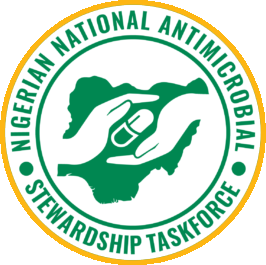Our vision/ antimicrobial stewardship
The task force will focus primarily on Antimicrobial Resistance and Antimicrobial Stewardship in Humans.
We envision a Nigeria where:
Antimicrobial resistance is minimized through optimal antimicrobial use, safeguarding public health, animal health, and the environment for present and future generations.
Antimicrobial Stewardship (AMS) is integrated into all levels of the healthcare system .This includes primary, secondary, and tertiary healthcare facilities, community pharmacies and public health facilities
Evidence-based guidelines for antimicrobial use are developed, disseminated, and consistently implemented nationwide. These guidelines are regularly updated based on the latest scientific evidence and local epidemiological data.
Healthcare professionals and the public are knowledgeable and actively engaged in responsible antimicrobial use.
Robust antimicrobial resistance (AMR) surveillance systems are utilized to monitor trends, detect outbreaks, and inform AMS interventions.
Access to quality-assured antimicrobials is ensured, inappropriate dispensing is strictly controlled, and where effective mechanisms are in place to prevent counterfeit and substandard antimicrobials from entering the market.
Innovation and research in antimicrobial resistance and stewardship are promoted and supported.
This vision serves as a guiding principle for the Nigerian National Antimicrobial
Stewardship Taskforce as we work towards a healthier and more sustainable future for Nigeria.
What is ANTIMICROBIAL STEWARDSHIP and how does it differ from Antimicrobial Resistance?
In the fight against antimicrobial resistance, there are multiple avenues where interventions can be applied. NNAST will support the government and other agencies who are working to reduce the indiscriminate use of antibiotics. We plan to scale up antimicrobial stewardship, surveillance, and research in the field.
Antimicrobial stewardship is a program that aims to reduce the misuse and overuse of antibiotics and other antimicrobial medications to prevent microbial resistance. These medications are essential for treating infections, but their misuse has led to antibiotic resistance, which occurs when bacteria and fungi develop the ability to resist the drugs that are meant to kill them.
Antimicrobial stewardship programs (ASPs) use a variety of strategies and techniques to optimize the use of antibiotics in hospitals. These programs aim to ensure that patients receive the correct antimicrobial for the right infection , no antimicrobial if there is no infection , at the right time, the right dose, and appropriate minimal duration for their diagnosis.
The task force’s activities in this field will include:
Working with healthcare facilities to establish and strengthen their antimicrobial stewardship programs
Improving identification of resistant organisms
Coordinating research and surveillance activities on antimicrobial resistance (AMR)
Creating an AMR data platform
Promoting education and enlightenment on AMR in both health care personnel and the general public
Capacity building for the Nigerian healthcare systems on AMS.


